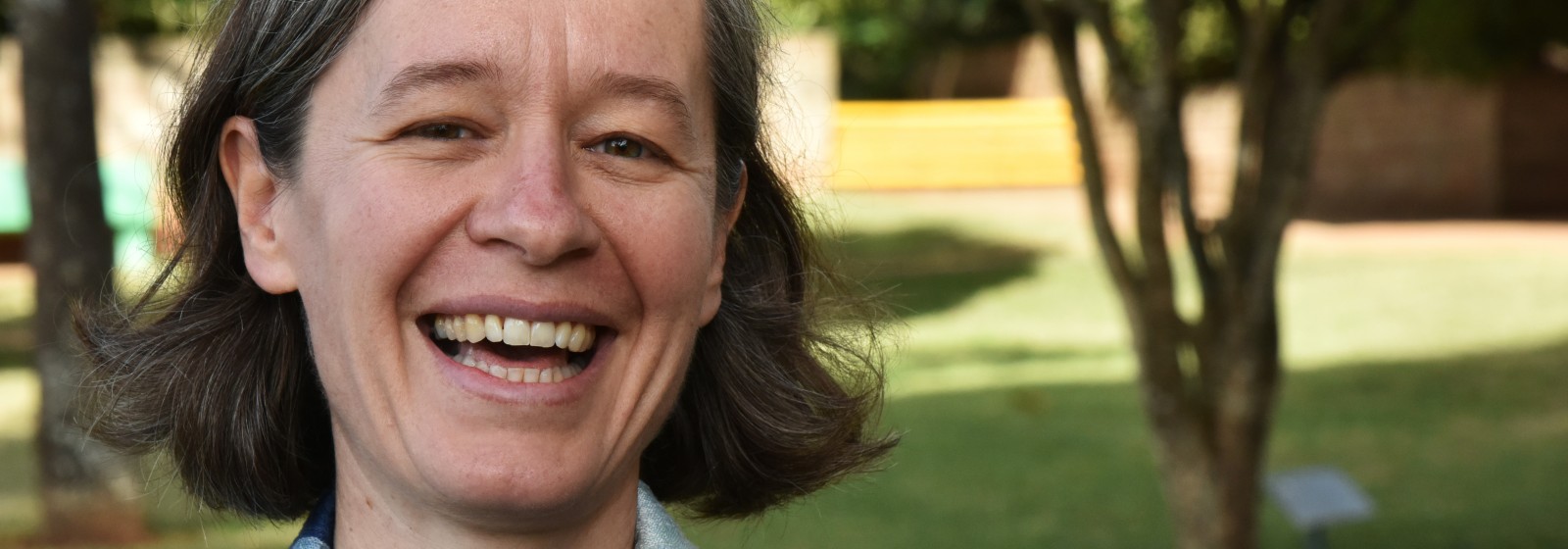The CGIAR Research Program on Livestock (Livestock CRP) recently announced with pleasure the appointment of Dr. Isabelle Baltenweck as its new flagship leader for Livestock, Livelihoods and Agro-food Systems (LLAFS). Originally from France, Isabelle brings to the role close to 20 years of post-doctoral experience in smallholder value chains in Africa, South and South-East Asia, with a focus on livestock farming. She has played a central role in the flagship through its different iterations, first as the Livestock & Fish CRP and in its current form, as the Livestock CRP.
On International Women and Girl’s in Science day, we celebrate Isabelle’s contributions as an agricultural economist with the International Livestock Research Institute (ILRI) for 19 years, while looking ahead to her new role that she is inheriting from Dr. Steve Staal, where she will draw upon her varied areas of expertise in farm level economics, value chains, gender, livelihoods and systems approach.
Here Isabelle shares with us her vision for the LLAFS flagship and talks about what motivates her most.
With 3 years left on the clock, what opportunities do you see for the flagship and for the Livestock CRP as a whole?
Quite a lot of work has been accomplished in the first phase of the CRP as Livestock and Fish, and now two years into the current phase, we have a real chance now to consolidate research outputs in order to generate some solid international public goods, through applying lessons learned from our cross country and cross commodity experiences.
We are able now to formulate fewer and more focused research questions – including whether livestock can really help move farming communities onto the path towards gender equity. We are also in a position to concretely inform the debate on how and why it is important to invest in livestock value chains, for which types of benefits, and at various levels – i.e. farm, value chain and country.
What do you bring to the flagship leadership position?
I believe in inter-disciplinary work, and for me this is what the Livestock CRP is all about – harnessing the expertise of different people. I enjoy working with people from different disciplines and being challenged. I also know livestock systems well, especially dairy.
Mostly, I want to ensure is that our research answers important questions, not just the ones from donors, but especially those from the livestock communities and stakeholders that we serve.
We need to be looking at how the research conducted in different countries are answering the CRP’s research questions, helping us to identify innovations that can have the most impact. For example, what are better ways for farmers to access the needed inputs and services – those that enable value chain actors to be more profitable and improve their livelihoods. We need to provide evidence on various options so that people–from an animal health provider, a woman livestock trader, to an extension or ministry person–can make an informed choice, taking into account trade-offs.
What drew you towards working as an agricultural economist in agricultural research for development?
I believe scientists, including economists, have a responsibility to make the world a better place.
I could have been a farmer (though I’m way too risk averse) or a development practitioner (but I spend too much time considering different options), so I ended up in research. Economics is about looking at options and trade-offs, and this approach allows us to better understand decision making and processes.
What are some of your professional highlights?
I would say the contribution I made to the Heifer-led East Africa Dairy Development project. ILRI was the research partner and I contributed to the design and implementation of this multi-country, multi-partner project. Being able to influence the design of the 2nd phase was a great achievement, moving it away from a “one-size-fits-all” hub model to a flexible hub approach.
I also take great pride in seeing my various staff and students increase their capacity – capacity strengthening is a big part of what I do (not only formal training).
What gets you up in the morning?
It would have to be working with great colleagues, and knowing that I will learn something new (almost) every day.
